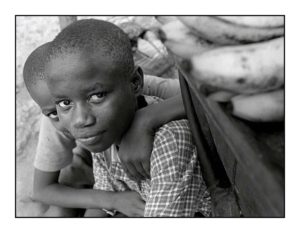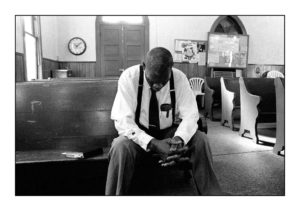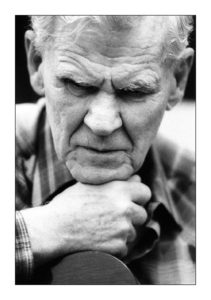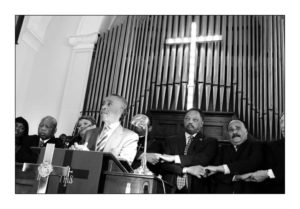A Gathering Place…..
Welcome to the Visiting Artists section of WildesArt. This is a gathering place of artists, songwriters, musicians, prose writers, and poets, who are creating for the love of creating and touching lives. I am a curious sort of person, so I always wonder what makes such talented folks who they are. What experiences and beliefs have led them to what they are doing at this point in time?
Visiting Artist: Jim Gavenus
By Barbara Hengstenberg
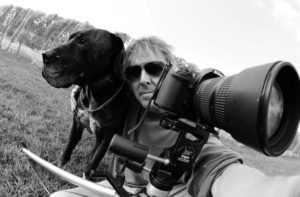 Take one look at a Jim Gavenus photograph, and I guarantee your spirit will be moved. To me, his documentary work is reminiscent of Dorothea Lange. How does one capture such feeling…heartache, happiness, despair, and hope…in an image? Come to find out, it’s all about taking the time to listen. To listen to the story. Listen to the environment. Listen to — and with — the soul. Jim speaks of spending time with his “subjects”, sitting on front porches, entering their lives, truly listening…and leaving as a friend.
Take one look at a Jim Gavenus photograph, and I guarantee your spirit will be moved. To me, his documentary work is reminiscent of Dorothea Lange. How does one capture such feeling…heartache, happiness, despair, and hope…in an image? Come to find out, it’s all about taking the time to listen. To listen to the story. Listen to the environment. Listen to — and with — the soul. Jim speaks of spending time with his “subjects”, sitting on front porches, entering their lives, truly listening…and leaving as a friend.
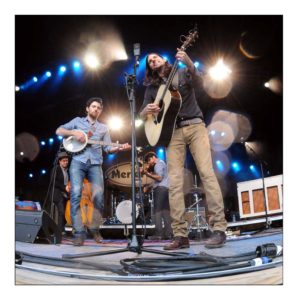 Jim’s music photography captures the excitement of the performer and the thrill of the performance. He’s right there, in front of the stage looking in and on the stage, looking out. Soaking it in.
Jim’s music photography captures the excitement of the performer and the thrill of the performance. He’s right there, in front of the stage looking in and on the stage, looking out. Soaking it in.
This is an artist who creates in order to make a difference in the world I’ve been talking with Jim over the past year, as he has been developing the Display of Love exhibit, and I was honored to be invited to contribute artwork. Read about this coming-together of all sorts of artists in an effort to embrace and spread LOVE.
I invite you to read about Jim’s world, and to take some time to deeply contemplate his images. And stay tuned for more information about the Display of Love.
* * *
WildesArt: Tell us about your work as a documentary photographer and a music industry photographer. How are the similar/dissimilar?
Jim Gavenus: My work as a documentary photographer usually focuses on the human condition, a social issue, or injustice. I tell the stories of people trying to overcome a tragedy, the courage they demonstrate and their hope for a better day. Many of the people I photograph are forgotten. Their life and condition goes unrecognized. So, I give a voice to their situation. I do this work to bring awareness and I hope to educate people in hopes of bringing about change. For many years I called myself a documentary photographer but now I use the title storyteller. My work has developed beyond the photograph and now includes the stories of the people I’ve met, photographed and call friends.
Several years ago I did and exhibit, “No Simple Highway” and as I started to put the show together from various projects, “Faces of Haiti” “Death and Dying: A Celebration of Life” “Southern Accents” which documented poverty in the south, I realized that the journey a musician travels includes tragedy, hardship and loss. They also have the determination to overcome. So I included photos from the road and told stories of the difficulties and sacrifice that our heroes on stage make.
I approach music photography with the same passion. I am trying to tell a story with my photos. I am looking for personality and life and capturing that in the image.
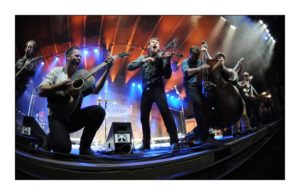 For me the music is a perfect relief from the more serious subjects I sometimes deal with. Its a great balance and I’m surrounded by happiness and joy, excitement and friendship. Musicians give so much. We turn to music in good times and bad and to be in the middle of it all gives me such a high. When I face the stage I can feel the energy of the crowd and when I face the crowd its as if I’m on stage soaking in all the smiles. Its an amazing place to be.
For me the music is a perfect relief from the more serious subjects I sometimes deal with. Its a great balance and I’m surrounded by happiness and joy, excitement and friendship. Musicians give so much. We turn to music in good times and bad and to be in the middle of it all gives me such a high. When I face the stage I can feel the energy of the crowd and when I face the crowd its as if I’m on stage soaking in all the smiles. Its an amazing place to be.
WA: Where did you train as a photographer?
JG: I went to school in Daytona Beach, Florida. It is now called Daytona State College
They have an amazing photo program with professors that challenged me and shaped my world.
WA: What do you seek out when creating photographs? What makes for a meaningful photo?
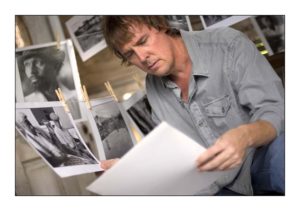 JG: I look for personality. I usually take my time making photos. I want to know the subject. I want to build a trust so they let me in to their world. When I am accepted it allows me to make more intimate/storytelling images.
JG: I look for personality. I usually take my time making photos. I want to know the subject. I want to build a trust so they let me in to their world. When I am accepted it allows me to make more intimate/storytelling images.
I also hope to bring about emotion from the viewer. If someone looks at my work and smiles, laughs, cries, questions…then it was a success
WA: What adventures in your life have led you to where you are and who you are, artistically?
JG: I have had some wonderful adventures that have shaped me as a person and a photographer. In my twenties I went to Alaska and worked as a commercial fisherman. That time taught me a lot about people, hard work and what is really important in life. I had no running water or electricity during that time and learned that material possessions are not nearly as important as human relationships.
Each of the projects that I’ve done has taught me different things and has helped me grow as an artist. The terminally ill project taught me to respect people and to treat them with dignity. It taught me to deal with my emotions and how to manage the things I would witness doing these projects.
The homeless project allowed me to see folks for their merits and spirit rather than judge others by their appearance. I also quickly learned that doing this work I would make myself vulnerable and needed to stay safe. Not to loose focus of my surroundings.
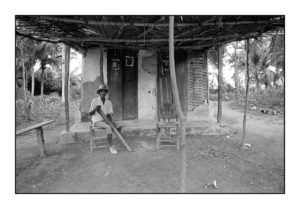 Haiti was an eye opener. I learned a lot about travel and communicating with others. I learned to make my own decisions and judgments on people and situations instead of relying on others or the news.
Haiti was an eye opener. I learned a lot about travel and communicating with others. I learned to make my own decisions and judgments on people and situations instead of relying on others or the news.
All the projects taught me to respect a person’s condition and that listening is a huge part of making photographs. Over time I have learned that making photographs of the people I do is a gift. They don’t have to let me in their world. So when they do I must appreciate that gift and not take it for granted.
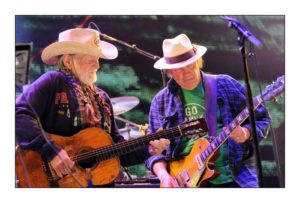 In the music world I have been surrounded by so much talent and creativity that it’s hard not to walk away from it passionate and energized.
In the music world I have been surrounded by so much talent and creativity that it’s hard not to walk away from it passionate and energized.
In my personal life I would have to say my fathers battle with cancer and his death.
I spent a great deal of time in care centers witnessing so many people battle this horrible disease and I was amazed at the courage and strength they had. I questioned myself and if I could be so strong. I wasn’t making photos then but knew it was an incredible story that I wanted to share with others. Maybe to prepare them in case they were faced with it, maybe because there was beauty hidden within the pain…I don’t know, but I know the emotions were so intense that it needed to be shared.
After his death, I needed to do something. I needed to get away. I needed to focus on something other than the loss and I ended up in photography school. It was something I had always wanted to do but never thought I could make a living doing photography. His death made me realize that we don’t know how long we have so we better get after it. So, I went to photography school and now I’m making a living making photographs and telling stories
WA: Who has inspired you along the way?
JG: There are so many. Russell Lee. I looked at a book of his and it changed my life. I saw a whole new world of photography and it was about life and people. Gary Monroe (a teacher and mentor) taught me that I could cover the issues that I do. He took me to Haiti at graduation and let me experience first hand a world I had never seen before. He taught me to anticipate. Keri Pickett showed me I could tell these stories with compassion.
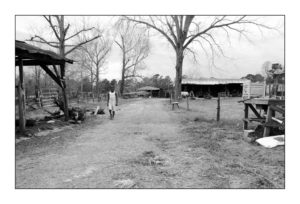 Today I look to James Nachtwey, Eugene Richards and Ron Haviv as three photographers that cover important issues but also three people that approach the work as I do. They understand that what we do is about the people in the photo and their condition. It is not about awards. We are not there to exploit their tragedy for our own gains but instead to tell their story to initiate change.
Today I look to James Nachtwey, Eugene Richards and Ron Haviv as three photographers that cover important issues but also three people that approach the work as I do. They understand that what we do is about the people in the photo and their condition. It is not about awards. We are not there to exploit their tragedy for our own gains but instead to tell their story to initiate change.
WA: If you weren’t creating photos, what would you be doing?
JG: I would either be a commercial fisherman in Alaska which was my job before photo school or I would do something music related. I’m not good enough to play so I would have to be behind the scenes working at a venue, promoting, managing, recording etc. I love the energy and personality of the music scene.
WA: What do you like to do to when you have some time?
JG: I don’t have a lot of time but I really love making photos and meeting new people, experiencing lifestyles I am not familiar with.
Away from the camera I like to grill and have a beer outside with friends and family.
And I would never turn down a music festival or show.
WA: Who have you not photographed, that you would love to capture?
JG: I would like to photograph Bob Dylan but preferably not on stage. Neil Young on his ranch. Springsteen on the Jersey Boardwalk.
An Avett family reunion or Thanksgiving would be fun.
Anyone with a good soul.
Anyone that had the courage to make a stance for what is right.
Completely different but I have wanted to go to Cuba for about 15 years, so maybe Castro.
Yesterday I met a brilliant doctor that really caught my eye and I found fascinating. So it doesnt need to be a celebrity. It needs to be a strong personality and spirit. Someone with an interesting path. Anyway, meeting the doctor inspired a new project that will focus on inspiring people and their stories. The people in our communities that have wonderful spirits and stories. The project will be as if each person invites the viewer on their front porch to chat for a bit.
WA: Your photographs seem to capture a spiritual, intimate essence. Can you speak to that?
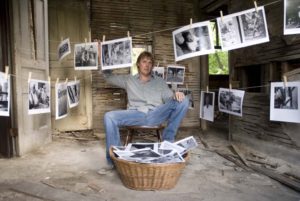 JG: I am drawn to people of all walks of life. I have attended many universities but none have taught me as much as the people in my photographs. We have all been around people that have a little “something.” Not sure what to call it but you know it when you’re in its company and for me that is a magical time. A time to soak it all in. The photo is an end result that I get to share with the world but for me it’s the entire experience that I treasure. The moments before and after the photos, the conversations, the music, the food, the smells…everything. I love it all. Some photographers work fast and want to move on to the next picture. I like to take my time and get to know the people I photograph. I like when I make that connection when they open up to me and share not just their appearance but their heart and soul. Everyone has a story and I love to listen to them
JG: I am drawn to people of all walks of life. I have attended many universities but none have taught me as much as the people in my photographs. We have all been around people that have a little “something.” Not sure what to call it but you know it when you’re in its company and for me that is a magical time. A time to soak it all in. The photo is an end result that I get to share with the world but for me it’s the entire experience that I treasure. The moments before and after the photos, the conversations, the music, the food, the smells…everything. I love it all. Some photographers work fast and want to move on to the next picture. I like to take my time and get to know the people I photograph. I like when I make that connection when they open up to me and share not just their appearance but their heart and soul. Everyone has a story and I love to listen to them
WA: What in your life brings you the most joy?
JG: Besides the images I make, it would be my family, friends and the extraordinary people I have the opportunity to meet through my work. I have been very fortunate and it is very easy for me to smile.
Also, as a teacher of photography at Luzerne County Community College, Nanticoke, PA, it brings me great joy to see young people succeed. To think I played a part in sparking their passion and helping them achieve their goals is a great feeling. Tonight is graduation and seeing their excitement and joy brings me happiness.
WA: Where do you see yourself 10 years from now? What do you hope to be doing?
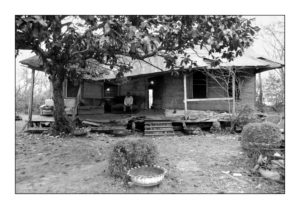 JG: I will still be making photos. Young photogs will be trying to push me aside, especially in the music world, but I’m not going anywhere. You will still see me at the front of the stage or sitting in the green room backstage talking and laughing with the bands.
JG: I will still be making photos. Young photogs will be trying to push me aside, especially in the music world, but I’m not going anywhere. You will still see me at the front of the stage or sitting in the green room backstage talking and laughing with the bands.
I will still be doing projects so you could see me on any front porch in the world. Hopefully I will have a book published of my work.
WA: What is your philosophy that guides your life?
JG: I believe there’s more good than bad in the world and good will prevail. I also believe that hatred will destroy you. It will consume you like a cancer and take every bit of joy from you if you allow it in your life. So I keep it at a distance.
WA: What have you done that you are most proud of?
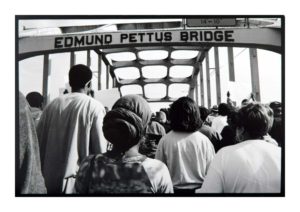 JG: I take great pride in the work I have done covering the foot soldiers of the civil rights movement. They are some of the most courageous, beautiful and inspiring people you can come across. They put their lives on the line to eliminate hate and segregation and to make our world a better place and, amazingly, they did it. They achieved something that nations and armies have not been able to do.
JG: I take great pride in the work I have done covering the foot soldiers of the civil rights movement. They are some of the most courageous, beautiful and inspiring people you can come across. They put their lives on the line to eliminate hate and segregation and to make our world a better place and, amazingly, they did it. They achieved something that nations and armies have not been able to do.
They changed the way we look at and think about each other; they changed the way we treat each other. That’s powerful stuff. They are true heroes and we don’t know their names. So this story means a lot to me because I feel we should know these people and my work allows me to share their story. My photos put a face and name to the sacrifice of change.
I am also very proud that my work of Doc Watson was used at the Grammy Awards.
WA: Tell us about the Display of Love exhibit. How and why did you develop this idea? How do you see it culminating?
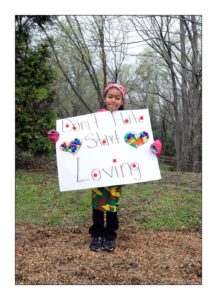 JG: The idea for this project was developed shortly after the attacks in Paris. I felt like I had to do something, that this was not how I wanted to live and standing by and doing nothing was not an option. I was saddened and frustrated at what I was witnessing
JG: The idea for this project was developed shortly after the attacks in Paris. I felt like I had to do something, that this was not how I wanted to live and standing by and doing nothing was not an option. I was saddened and frustrated at what I was witnessing
Martin Luther King said, “He who passively accepts evil is as much involved in it as he who helps to perpetrate it.” So the project was formed
I planned to do my own project at first but then thought it would be better to see it through the eyes of many folks…a diverse group coming together. So I turned to the art community. I sent a few emails with the idea and was amazed at the response. I also was shocked that so many felt helpless.
The project is simple. I asked people to communicate the ideas of LOVE, PEACE, COMMUNITY, DIVERSITY, …all things good in the world in any way they wish. I have received paintings, photographs, music, poems; children have sent their drawings. It is magical to have all this LOVE show up at my doorstep. It continues to grow and many more have contacted me since the recent tragedy in Orlando. So I continue to accept work and I’m building a show where all the works will be exhibited as a single displey of love.
I am not naive and think this will end the violence we see happening but I think it is important for us to display love. I think it’s important that we come together as a community. That we don’t just stand back and accept the hatred that exists. We have a voice in our lives and our communities and we can make a difference. We can start in our own homes and that can spread to our neighbors and so on.
Ultimately I want to see people of all walks of life come together and be surrounded by these expressions of love. As it continue to grow I may make it an online exhibit where people can add to it and visit from time to time.
View a selection of Jim’s photos below.
All photos Copyright Jim Gavenus. Used with permission.
Go to Jim’s Twitter Account @GavenusPhoto
Leave a comment
